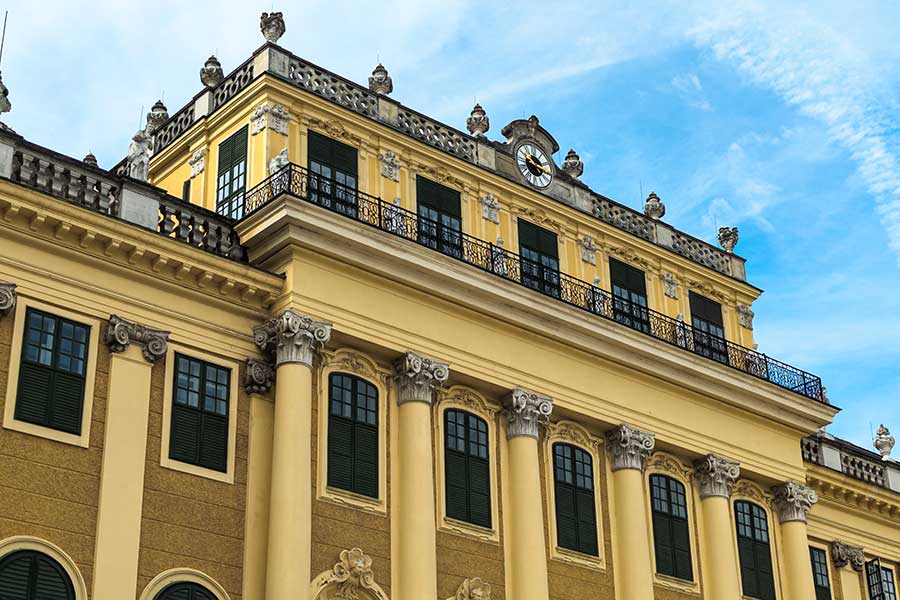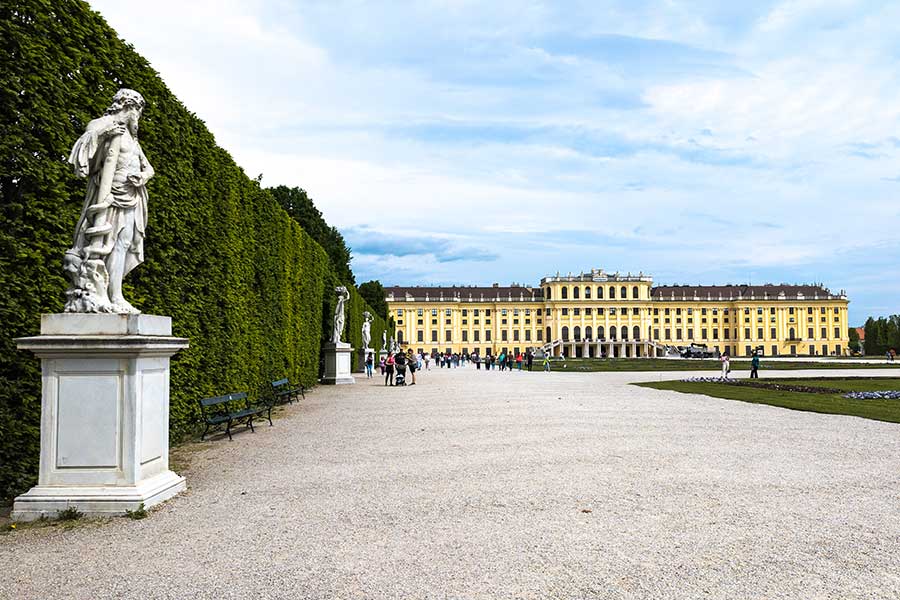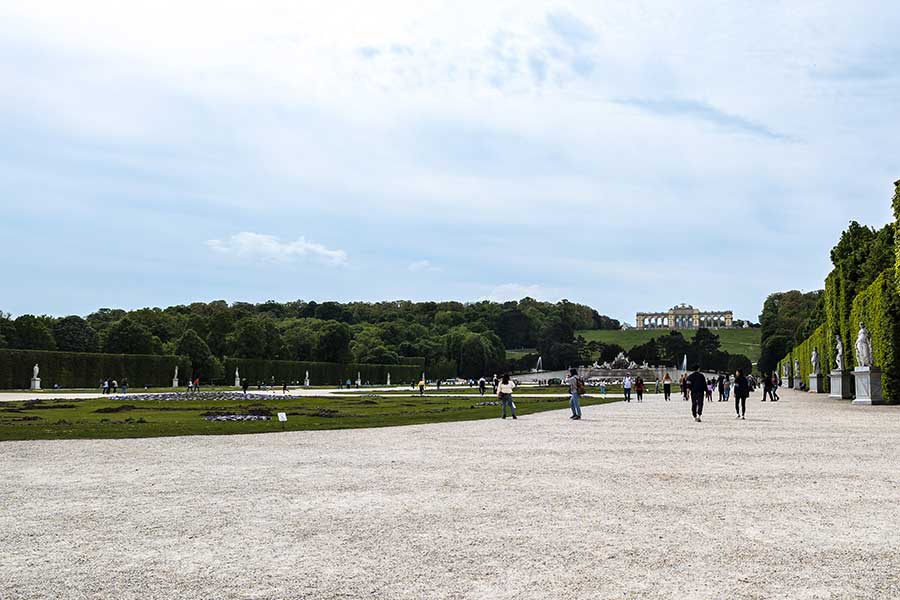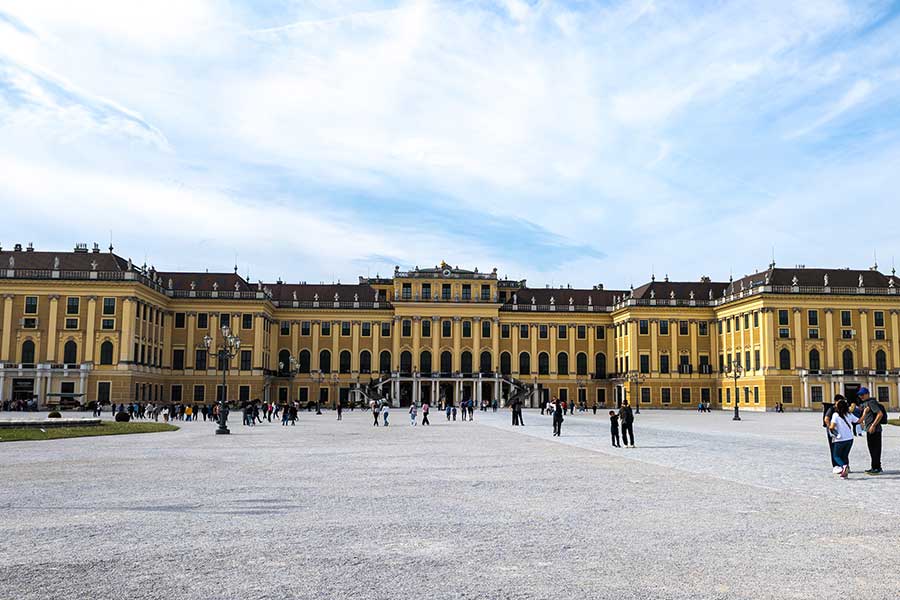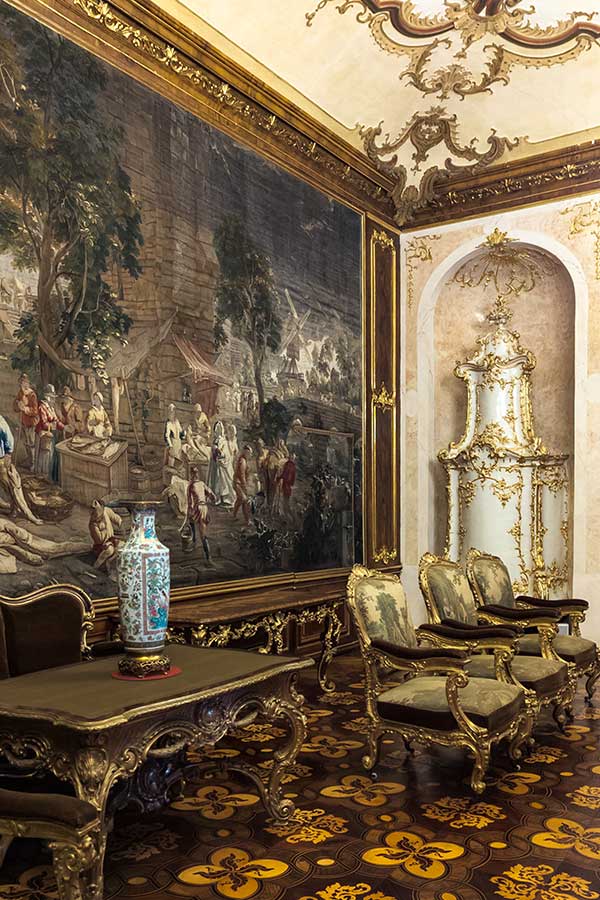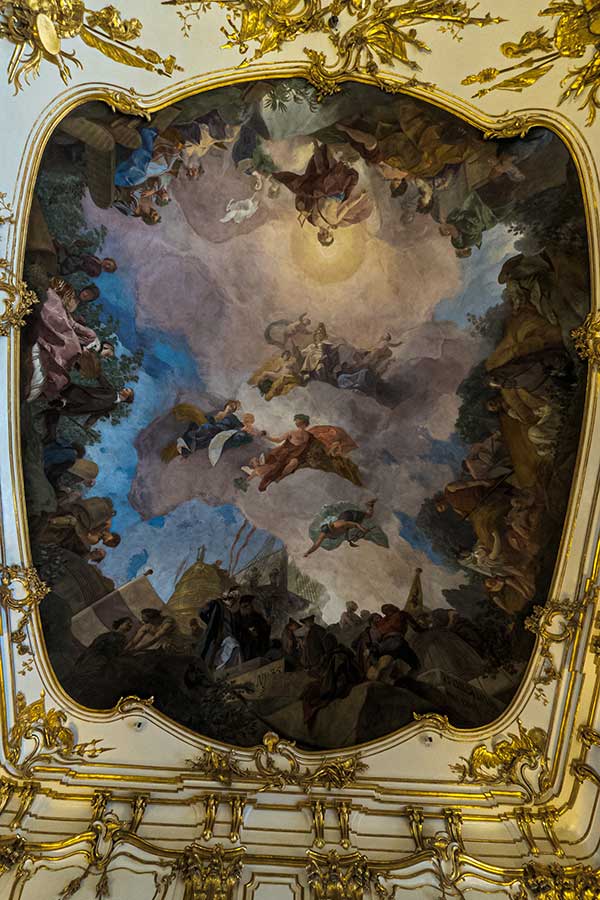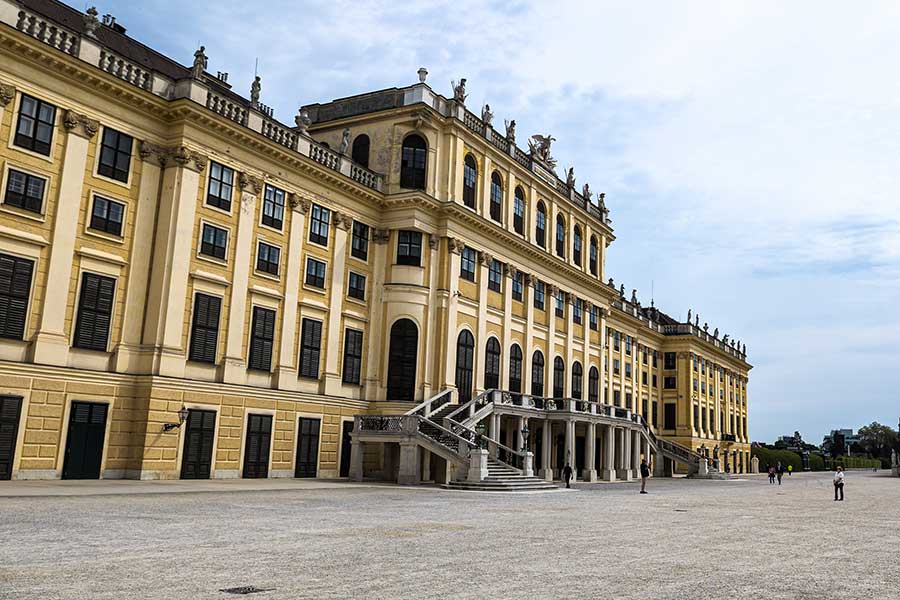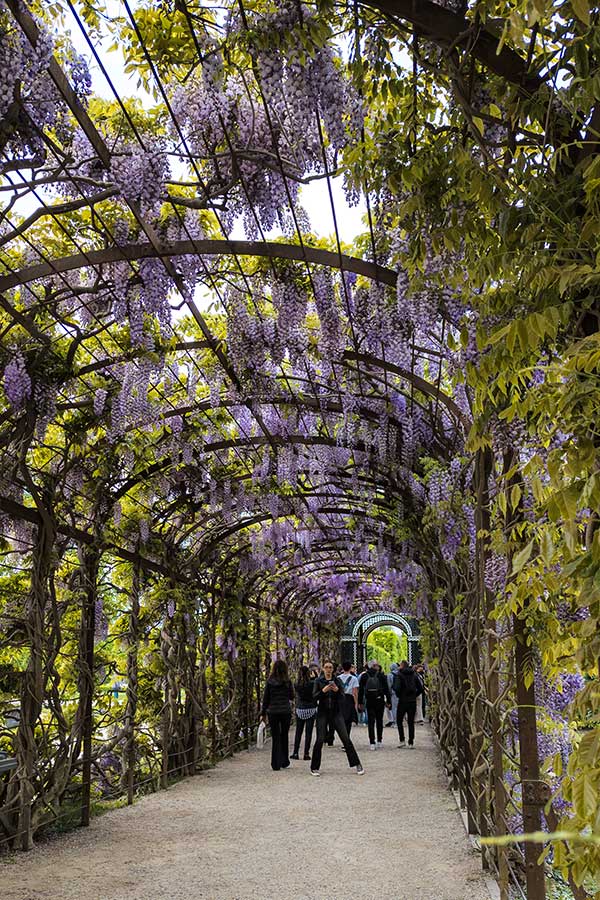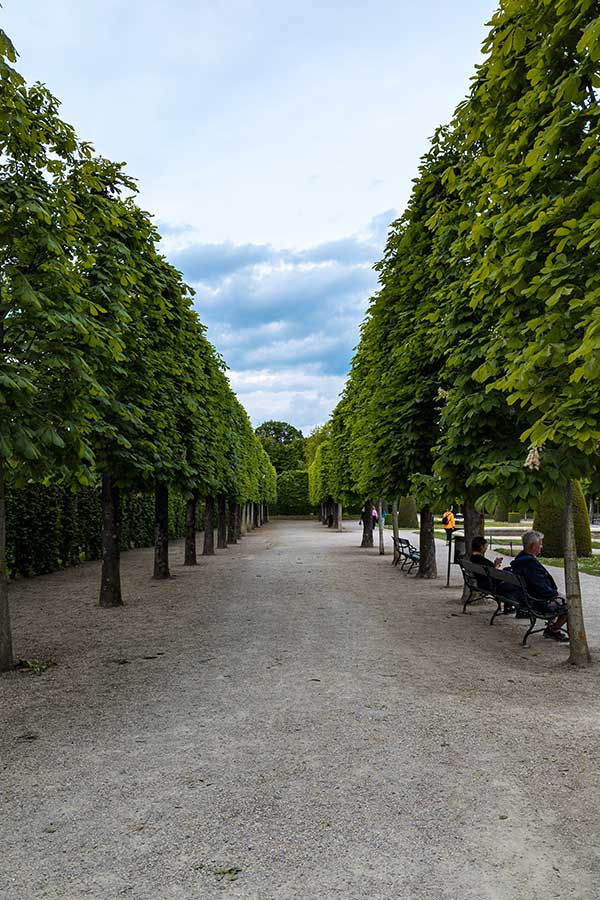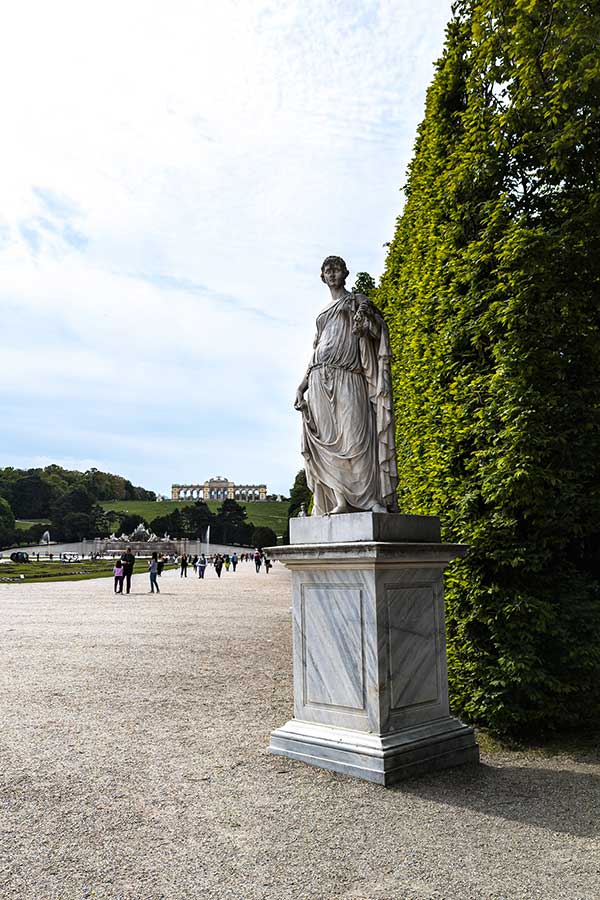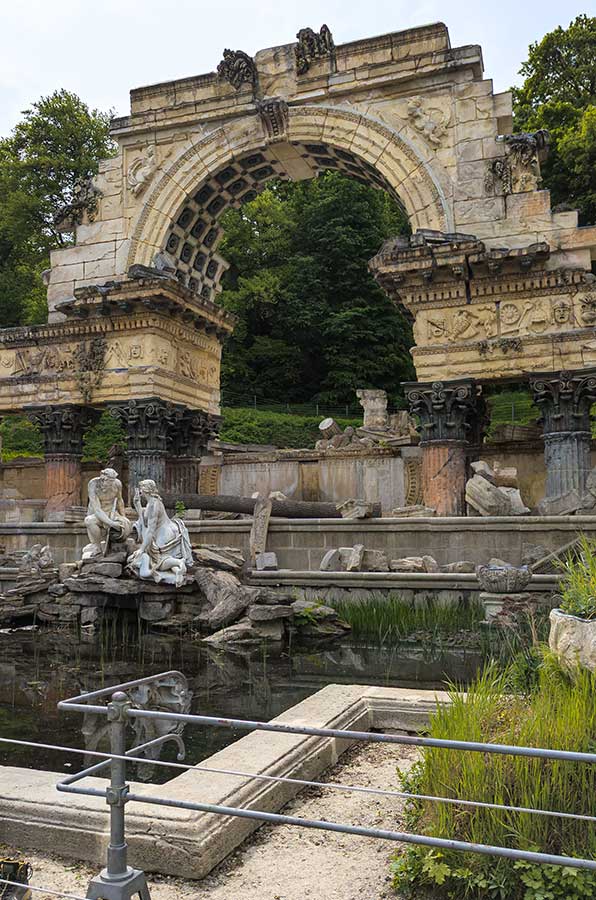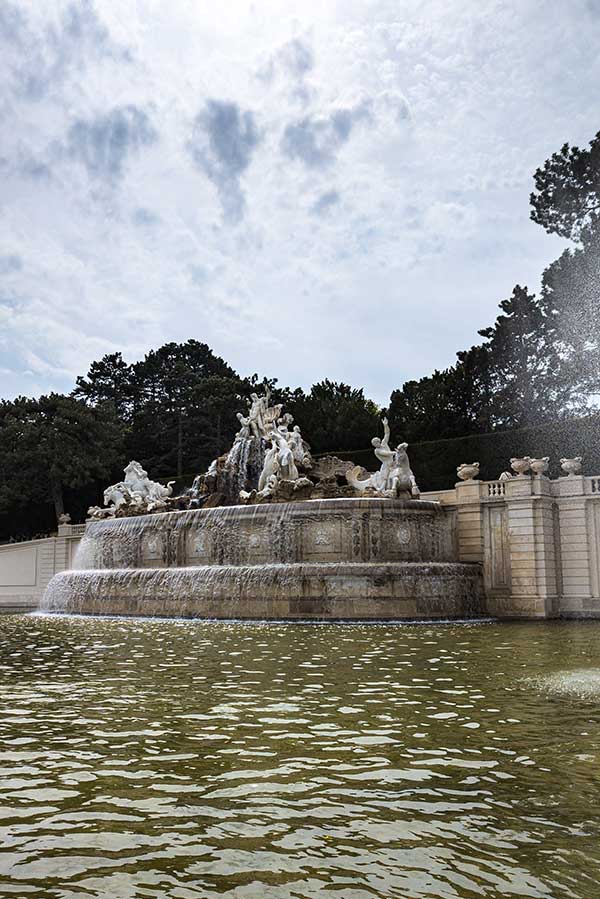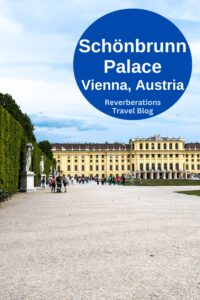For centuries, the Habsburgs called Schloss Schönbrunn in Vienna, Austria, their summer residence. What was once off limits to us mere mortals is now a must-see where travelers can spend a day (or more) strolling its halls and soaking up the sun in the sprawling public park.
With its massive scale, impressive gardens, and remarkable history, it is easy to be touched by the magic that is Schönbrunn Palace, as it is known in English. It is, after all, where Sisi, famous these days for her depiction in films and the television series Die Kaiserin, once called home.
A visit is enough to transport you back a few centuries to give you an idea of how a privileged few lived.
A Brief History of Schloss Schönbrunn
Schönbrunn Palace sits on 400 acres of land in western Vienna. But the story here goes back more than a millennium.
Its modern history starts In the 14th century when there were mills in the area before a monastery took control of the land. In the 16th century, a future mayor of Vienna acquired the land and built a manor house on the property. Roughly a decade later, the Holy Roman Emperor Maximilian II purchased the land as his hunting grounds.
When Emperor Ferdinand II died in 1637, his widow, Eleonora Gonzaga, was given property as her residence. During Eleonora’s time at the helm, the property was first referred to as “Schönbrunn,” or “beautiful spring.” She was instrumental to the entire property, expanding the original manor and adding the orangery.
The property continued to change hands over the centuries. At the request of Emperor Leopold I in the late 17th century, architect Johann Bernhard Fischer von Erlach, who would later work on the Austrian National Library State Hall, designed a Baroque royal hunting lodge for Crown Prince Joseph that replaced Eleonora’s manor.
In the mid-18th century, Empress Maria Theresa received the property as a wedding gift and it served as the imperial summer residence. During this period the palace was expanded and remodeled into the neoclassical palace we know today.
Empress Elisabeth, aka Sisi
Emperor Franz Joseph was born at Schloss Schönbrunn, spent much of his life there, and eventually died in the palace. His wife was the Empress Elisabeth, better known in popular culture as Sisi. She can be seen all over Vienna, but especially at the palace.
More than 150 years after being assassinated, the Empress is more popular than ever. This is thanks, in part in the German-speaking world, to a series of romantic films in the late-1950s. Sisi also created some of that mystique herself. She was notorious for trying to maintain a youthful look and eventually refused to take any photographs.
Visiting Schönbrunn Palace
History buffs and Sisi enthusiasts will no doubt want a peek inside the palace’s walls. The rooms are partially furnished and there are some jaw-dropping moments, including the gilded Great Gallery covered in Rococo frescoes and the Audience Room with its rich floor-to-ceiling walnut paneling (and, of course, gilding).
Visitors can opt for guided or self-guided tours. The timed tickets for self-guided tours include an audio guide that provides fascinating insights into each room and the people who lived and worked there.
As a key attraction in Vienna, the palace shouldn’t be missed. But crowds can be a challenge. This is especially true within the palace where the audio guide clusters visitors in specific spots in space that’s already limited to begin with.
This is less of an issue in the gardens, especially the further you get from the palace. Formal gardens in several styles can be found on the grounds in addition to a large public park. Exploring the garden offers delightful surprises, like the 18th-century Roman ruins or the striking fountains with their over-the-top ornamentation. The park is covered in lush trees towering overhead with songbirds flying from tree to tree overhead.
Tips for Visiting Schloss Schönbrunn
Schönbrunn Palace is all about trade-offs with crowds and your wallet.
With so much to see and do at Schloss Schönbrunn, there are a variety of tickets to pick from. Visitors can see as much or as little as they want, or focus on the areas they’re interested in. While this flexibility allows more control, selecting the “right” tickets is overwhelming. But there are some guidelines to follow.
Tickets can be booked online or on-site. If you buy tickets on-site, avoid the crowded lines in the visitor center and use a self-service kiosk outside. Tickets to the palace are timed. There is no spacious waiting area and timing is strictly enforced so it’s better not to be too early.
Shortly after the palace opened for the day on a morning in late April, I booked a pair of timed tickets from a kiosk outside for a timeslot within the hour. But during peak travel times that may not be possible.
The selection of tickets is dizzying. There are three different palace tickets, depending on how much you wish to see inside the magnificent building. Then there are the tickets that include guided tours and tickets to spots on the grounds: including a hedge maze, a couple of different gardens, and the Gloriette that sits behind the palace. There is also a zoo on the grounds and a children’s museum.
As a result of her popularity, there is a special Sisi ticket that includes entrance to a museum dedicated to her. There is a special guided tour of the palace focusing on Elisabeth and Franz Joseph and one also for Maria Theresa.
Passes that include multiple attractions, like the Vienna Pass or Flexipass, can be cheaper but they lock you in. If a pass isn’t for you, research ahead of time what you “must see,” then, depending on the crowds and how much time and money you want to spend, add on individual tickets of interest.
Getting There
Reaching this massive park and palace is quite easy. With public transit, the U4’s Schönbrunn subway station lets visitors off practically on the palace’s doorstep. Alternatively, the U4’s Hietzing stop is nearby, too. With the trams, the 10 and 60 lines have a palace stop.
For those driving, there are a few parking lots around the palace that offer paid parking but space can be limited.
Additionally, tourist buses for sightseeing, like Big Bus Tours, or city passes with hop-on-hop-off transport, like Vienna Pass, will transport you to the palace or around it.
Hopefully, you’ll have worn comfortable walking shoes once you’re at the palace and park. The park is quite large, with beautiful formal gardens, wooded areas, and plenty to discover. For a fee, the Panoramabahn is a shuttle that ferries visitors around the perimeter of the palace and park.
Save this post for later on Pinterest!
All photos and opinions are my own. This post contains affiliate links.
